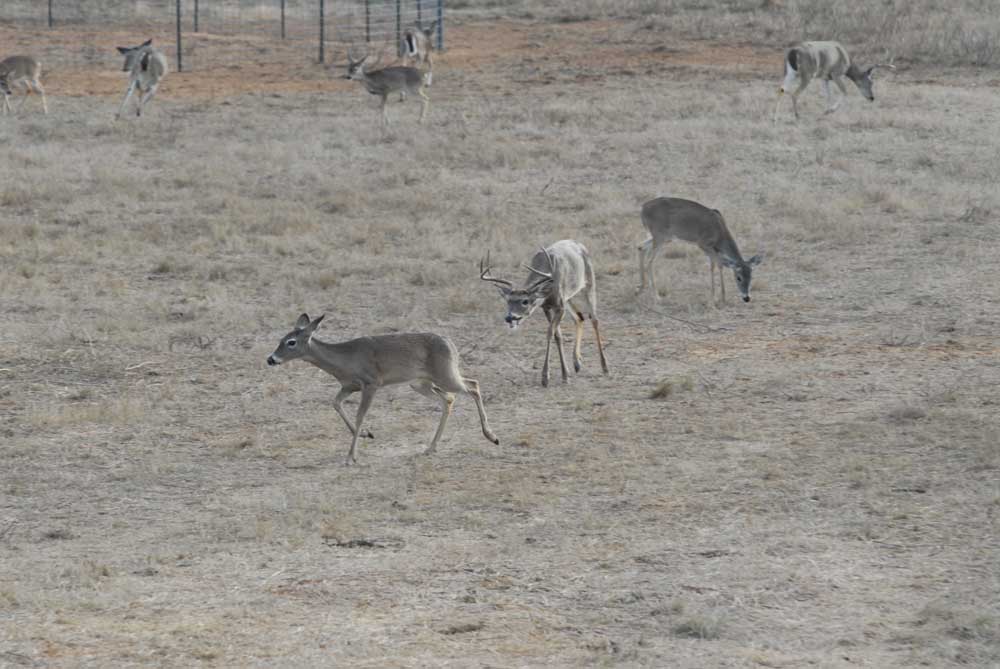New Direction: Texas A&M Research Project Could Help With Preventing Spread Of CWD
Published 11:30 pm Tuesday, October 25, 2022

- A Texas A&M research project looking at white-tailed deer DNA could provide a path to protecting Texas breeders and the state’s deer population.
Even with three new Chronic Wasting Disease testing zones coming online in Texas this fall, there is a light, albeit a dim one still at this time, at the end of the tunnel in regard to getting control of the disease.
In September, the Texas Parks and Wildlife Department announced new CWD surveillance zones in four South Texas counties, Duval, Jim Wells, Live Oak and McMullen; Gillespie County in the Hill Country; and Limestone County in the Post Oak Savannah. The disease was first detected in Texas in 2012, and now there are zones operating in 32 counties.
However, while the number of surveillance zones grows research is looking at testing techniques that could aid deer farmers while also help protect the safety of Texas’ wild white-tailed deer population and the multi-billion dollar deer hunting industry.
The research revolves around a single breeding buck on a South Texas ranch that is CWD positive, but has apparently not passed it along to other deer it had been penned with.
“They had it for two years before they realized it was a positive,” explained Mitch Lockwood, TPWD big game program leader. “This was a concern because he had been looking sick. It had had the disease for not sure how long. It had bred and exposed the same doe twice and was penned with the same bucks. All of those deer either died on their own or were tested voluntarily and zero were positive.”
The ranch has cooperated with the department and assisting with genetics research by Texas A&M associate professor Dr. Chris Seabury in CWD testing deer harvested and live testing the remainder of its herd, along with DNA sampling.
CWD is a neurological disease that affects members of the deer family. It is typically considered a fatal disease that is easily transmitted by close contact between animals. Symptoms can include weight loss, stumbling or tremors with lack of coordination among others. Often the signs do not become visible until long after an animal is infected.
Although many of the positive tests in Texas have come from deer in breeding facilities, testing of more than 10,000 deer a year have also shown it to occur in the wild.
Lockwood said the A&M research is looking at CWD in the same way researchers have scrapie, a similar disease found in goats and sheep. With scrapie, researchers used genetics to find the genome type in the animals to determine which are most or least likely to get the disease. While the diseases are similar, detecting the genome type with CWD is much more difficult and requires deeper genome investigation.
“After looking at thousands and thousands of genome locations they have come up with a value for each deer from minus one to one. The closer a deer is to one the more likely it is to test positive if exposed. If it is closer to minus one it is less likely to test positive,” Lockwood said.
If the research proves accurate the ultimate goal would be a selective breeding program like one adopted by goat and sheep ranchers based on DNA. That is a ways off as research continues not only on the relativity of the DNA profile, but also if it can be used in conjunction with producing the antler quality breeders seek.
“We don’t know how long before seeing whether it is successful or not. Compared to results from other ranches, they see there is a strong genetic influence,” Lockwood said.
He added if the research proves out it will be good for both deer farmers and wild deer.
“I think it can help the deer farmers and help wild deer from getting it. There is a lot of finger-pointing about where it came from. My perspective is not whether a deer was reared in a pen, but whether it got it in a trailer. There is no doubt it was spread by deer movement,” Lockwood said.
So far Texas has been lucky and not recorded a major dieoff from the disease. Lockwood said there is no telling how many deer have died from CWD, but so far the incidence rate is low. If it climbs to 13- to 15-% in a localized herd the impact could be devastating. What could be helping is that DNA results from sampling over the years has shown Texas’ deer herd is healthy based on the A&M research.
While hunters taking deer within CWD zones (https://tpwd.texas.gov/huntwild/wild/diseases/cwd/#checkMap) are required to participate in testing, there are things hunters in the remainder of the state can do to reduce the spread. The most important of which is properly disposing of carcasses, heads and hides and not just throwing them away on the landscape.






